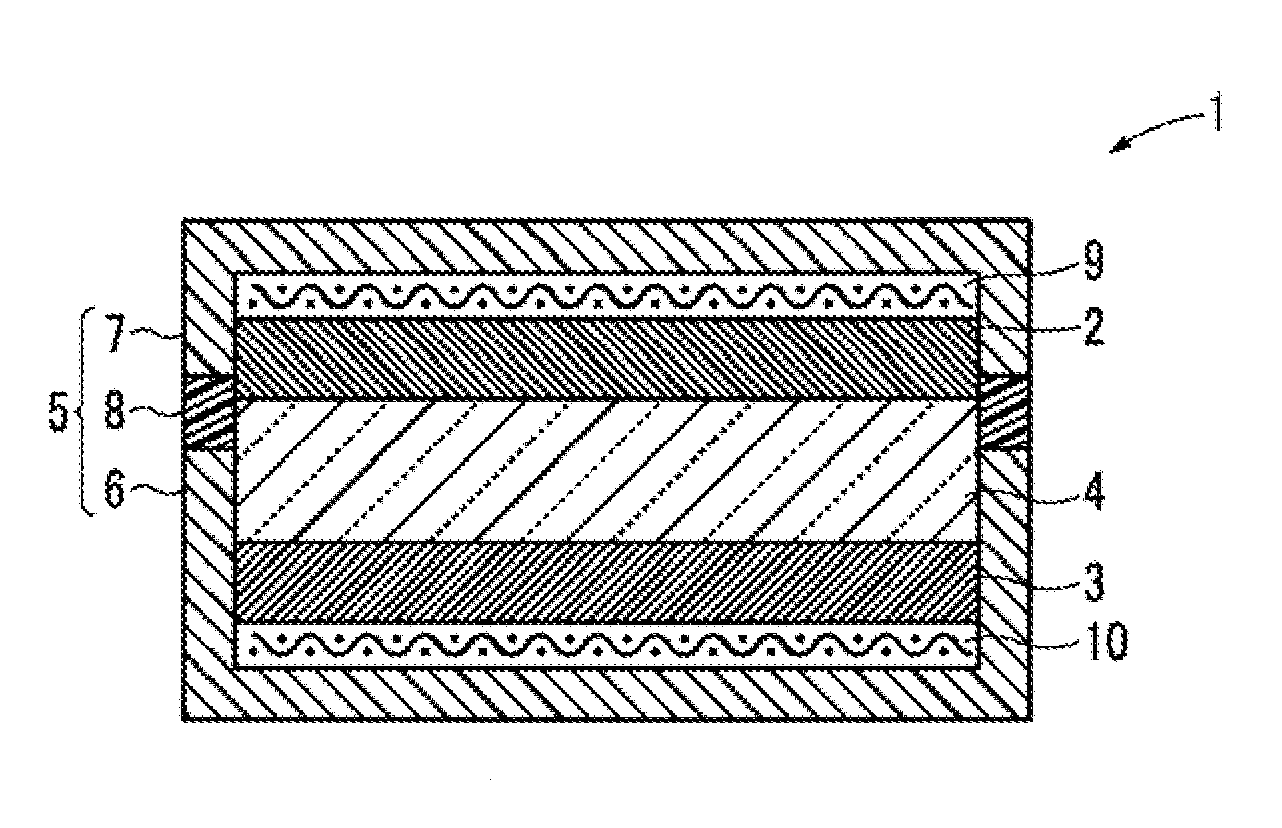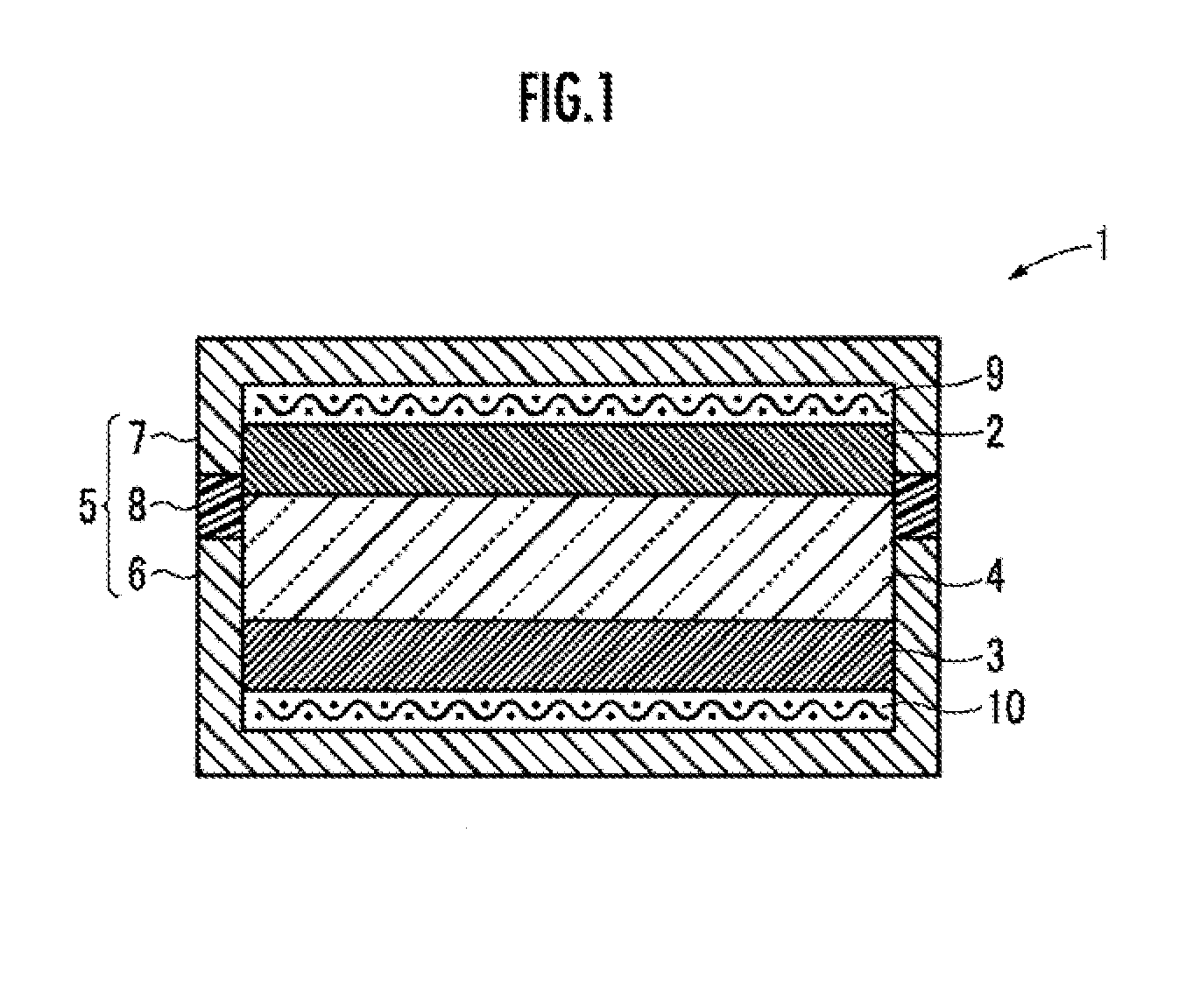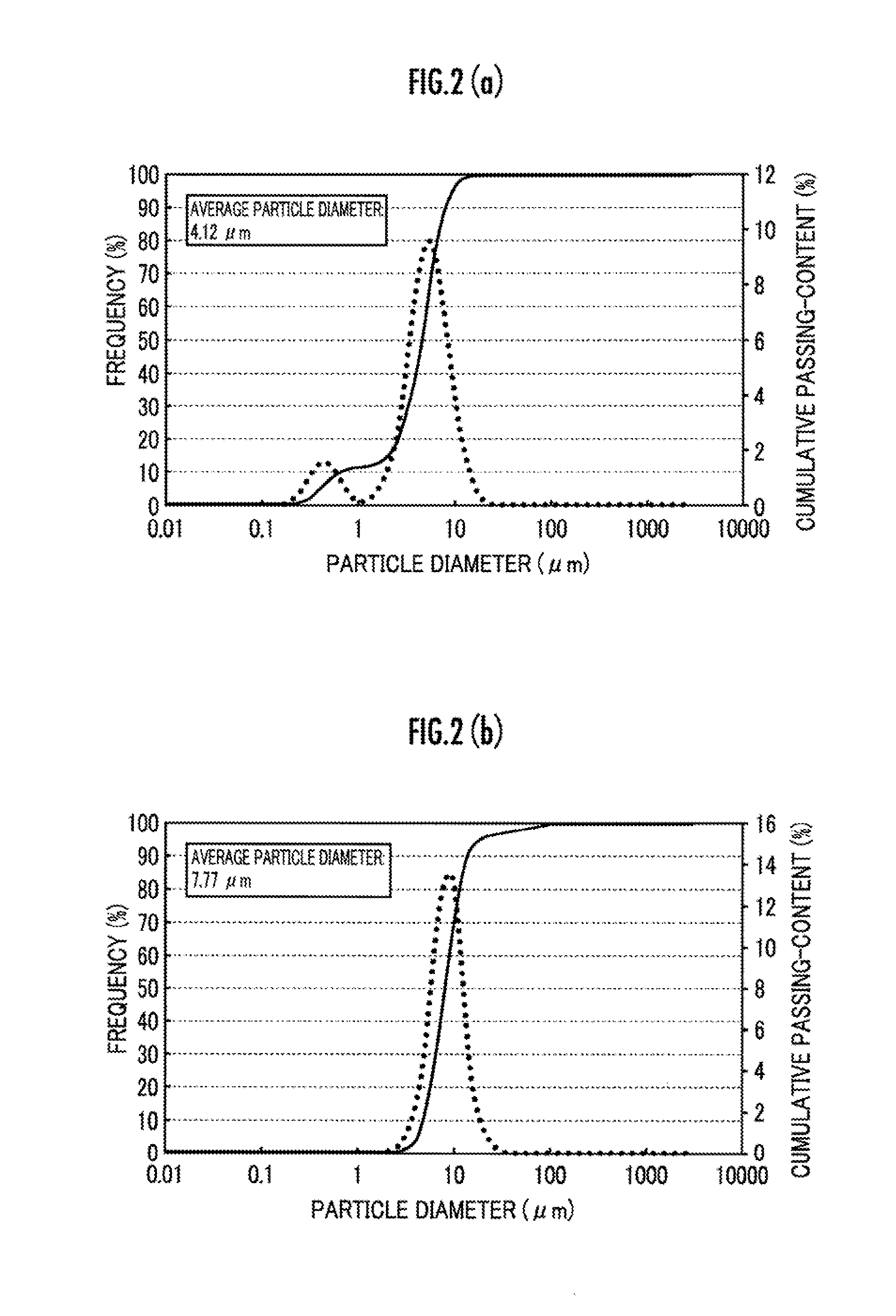Metal oxygen battery
a technology of metal oxygen battery and metal oxide, which is applied in the direction of non-aqueous electrolyte accumulator electrodes, electrical equipment, cell components, etc., can solve the problems of deterioration of electrolyte, negative electrode, unstable supply of oxygen, weak light transmission parts, etc., and achieve the effect of stabilizing the crystallinity of zro2, decreasing the discharge capacity and reducing the specific surface area
- Summary
- Abstract
- Description
- Claims
- Application Information
AI Technical Summary
Benefits of technology
Problems solved by technology
Method used
Image
Examples
example 1
[0062]In the present Example, first, yttrium nitrate pentahydrate, manganese nitrate hexahydrate and malic acid in a molar ratio of 1:1:6 were crushed and mixed to thereby obtain a mixture of a composite metal oxide material. Then, the obtained mixture of the composite metal oxide material was reacted at a temperature of 250° C. for 30 min, and thereafter further reacted at a temperature of 300° C. for 30 min and at a temperature of 350° C. for 1 hour to perform primary calcination.
[0063]Then, the primarily calcined material obtained in the primary calcination was crushed and mixed, and thereafter, zirconium nitrate pentahydrate was added thereto so as to become 20% by mass of the total amount of the primarily calcined material, and secondarily calcined at a temperature of 800° C. for 3 hours to thereby obtain a composite metal oxide.
[0064]The composite metal oxide obtained was confirmed to be a composite metal oxide represented by the chemical formula YMnO3 and have a hexagonal str...
example 2
[0076]In the present Example, a metal oxygen battery 1 was obtained wholly as in Example 1, except for adding zirconium nitrate pentahydrate so as to become 5% by mass of the total amount of the primarily calcined material.
[0077]Then, the average particle diameter D50 of the composite metal oxide obtained in the present Example was calculated wholly as in Example 1, and a result thereof in the similar degree as in Example 1 was acquired.
[0078]The specific surface area of the composite metal oxide obtained in the present Example was measured wholly as in Example 1. The result is shown in Table 1.
[0079]Then, the charge and the discharge were carried out wholly as in Example 1, except for using the metal oxygen battery 1 obtained in the present Example. The relationship between the cell voltage and the discharge capacity at this time is shown in FIG. 4(a), and the relationship between the cell voltage and the charge capacity at this time is shown in FIG. 4(b).
example 3
[0080]In the present Example, a metal oxygen battery 1 was obtained wholly as in
[0081]Example 1, except for adding zirconium nitrate pentahydrate so as to become 1% by mass of the total amount of the primarily calcined material.
[0082]Then, the average particle diameter D50 of the composite metal oxide obtained in the present Example was calculated wholly as in Example 1, and a result thereof in the similar degree as in Example 1 was acquired.
[0083]The specific surface area of the composite metal oxide obtained in the present Example was measured wholly as in Example 1. The result is shown in Table 1.
[0084]Then, the charge and the discharge were carried out wholly as in Example 1, except for using the metal oxygen battery 1 obtained in the present Example. The relationship between the cell voltage and the discharge capacity at this time is shown in FIG. 4(a), and the relationship between the cell voltage and the charge capacity at this time is shown in FIG. 4(b).
PUM
| Property | Measurement | Unit |
|---|---|---|
| metallic | aaaaa | aaaaa |
| electrochemical equivalent weight | aaaaa | aaaaa |
| energy density | aaaaa | aaaaa |
Abstract
Description
Claims
Application Information
 Login to View More
Login to View More - R&D
- Intellectual Property
- Life Sciences
- Materials
- Tech Scout
- Unparalleled Data Quality
- Higher Quality Content
- 60% Fewer Hallucinations
Browse by: Latest US Patents, China's latest patents, Technical Efficacy Thesaurus, Application Domain, Technology Topic, Popular Technical Reports.
© 2025 PatSnap. All rights reserved.Legal|Privacy policy|Modern Slavery Act Transparency Statement|Sitemap|About US| Contact US: help@patsnap.com



